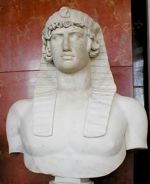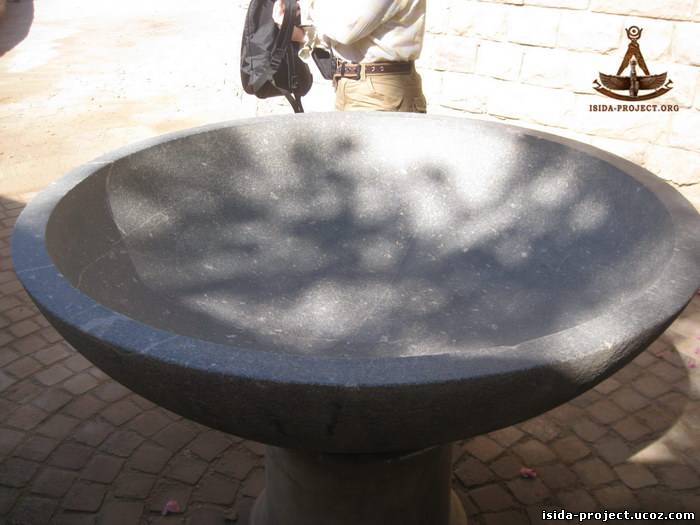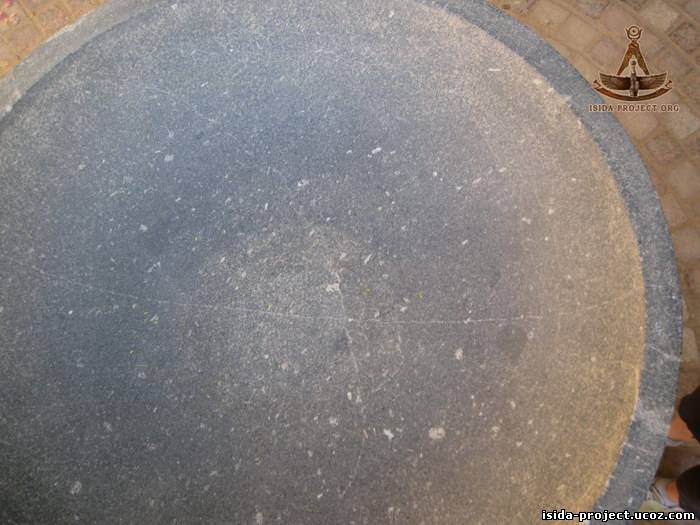|
Basalt vase in Nubian Museum. Aswan
|
|
| 7th_Guest | Date: Monday, 30.09.2013, 03:04 | Message # 1 |

Group: Administrators
Messages: 276
Status: Offline
| Welcome to discuss the exact geometry of the ancient Egyptian artifact - basalt vase. It is located in Aswan, Nubian Museum. The form of this vase is the ideal geоmetrical circle. The width of it's walls is the same all over it's perimeter.




More info is here >>
|
| |
|
|
| dougkeenan | Date: Monday, 30.09.2013, 04:03 | Message # 2 |
|
Group: Forum Member
Messages: 5
Status: Offline
| Thank you for inviting me to your forum! :)
I have tried to model this object using the photos. Good job on the photography, many useful angles!



The purple rectangle underneath the object is a 16x14 palms (120x105cm) outline identical to the descending passage of the G.P., and if I understand Stephen Mehler correctly, *all* descending passages are these dimensions.
This model, created from the photos, suggests an upper outer diameter of 131cm (2.5 R.C., 17.5 palms, 70 digits). The upper inner diameter is 120cm (16 palms). The perimeter is 6cm (3 digits). The model suggests an outer depth of 37cm (5 palms). It cannot predict the inner depth, but I accept the Project's suggestion that the bottom is thicker than the sides on the order of a centimeter. My opinion would be that the inner depth is 4 palms, making the inner curve a 2-to-1 paraboloid and the outer curve a 7-to-4. Thus I believe it is not a section of a sphere. Looks more like a lens to me.
I welcome comments and criticism.
Added (30.09.2013, 04:03)
---------------------------------------------
Quick 3D print of object, at least the computer's model of it:

Message edited by dougkeenan - Monday, 30.09.2013, 04:35 |
| |
|
|
| Guy | Date: Monday, 30.09.2013, 04:07 | Message # 3 |

Group: Researcher
Messages: 3
Status: Offline
| dougkeenan, not all descending passages are these dimensions.
|
| |
|
|
| 7th_Guest | Date: Monday, 30.09.2013, 04:15 | Message # 4 |

Group: Administrators
Messages: 276
Status: Offline
| dougkeenan, great 3D work!
|
| |
|
|
| dougkeenan | Date: Monday, 30.09.2013, 04:31 | Message # 5 |
|
Group: Forum Member
Messages: 5
Status: Offline
| Quote (Guy) dougkeenan, not all descending passages are these dimensions.
Thank you. The error is entirely mine, do not let me misattribute Mr. Mehler.
7th_Guest, thanks! It's really a simple spline, only four vertices. :)
|
| |
|
|
| 7th_Guest | Date: Monday, 30.09.2013, 04:31 | Message # 6 |

Group: Administrators
Messages: 276
Status: Offline
| The video of the vase:
|
| |
|
|
| 7th_Guest | Date: Monday, 30.09.2013, 07:22 | Message # 7 |

Group: Administrators
Messages: 276
Status: Offline
| More pictures of the object:





|
| |
|
|
|
|
|
|
| RedFox | Date: Monday, 30.09.2013, 11:04 | Message # 10 |

Group: Moderators
Messages: 4
Status: Offline
| Quote (dougkeenan) Looks more like a lens to me. |
| |
|
|
| dougkeenan | Date: Tuesday, 01.10.2013, 17:28 | Message # 11 |
|
Group: Forum Member
Messages: 5
Status: Offline
| Quote (RedFox) If the vase to fill with water, it will be a mirror in which you can watch the moving stars and moon phases. However, if the adjacent walls not prevent...
True. With the arrangement as shown, one could stand on the walls and look at the upper mirror to see the image. The technology necessary to make the lower object should also be able to make the upper.

|
| |
|
|
| 7th_Guest | Date: Wednesday, 02.10.2013, 04:10 | Message # 12 |

Group: Administrators
Messages: 276
Status: Offline
| The walls are modern. The real location of this object is unknown, unfortunately...
|
| |
|
|
| RedFox | Date: Wednesday, 02.10.2013, 09:26 | Message # 13 |

Group: Moderators
Messages: 4
Status: Offline
| The vase belongs to the rather late Roman time. Most likely, it's just a garden decor.
|
| |
|
|
| cdunn1546 | Date: Friday, 16.09.2016, 01:09 | Message # 14 |

Group: Forum Member
Messages: 2
Status: Offline
| Good evening. This is my first time here reading through the site and before I move on to other pages, I thought I would comment on this thread. I see it is from 2013, so please forgive me if my comments are too late to effect the course of discussion or research.
I would first say that there are some very good photographs here, and I appreciate the enthusiasm of the researchers that have applied their skills and knowledge in an attempt to interpret the artifact.
There are many artifacts in museums around the world that seem to suggest, at first glance, that they may have been machined on a lathe. The artifact under study seems to be such an object. There is another artifact in the Manchester Museum in the UK that appeared to me to be crafted to a high order of precision. Before, getting too excited about it, though, I sought and received permission to take some precise measurements.
I was operating on the premise that any object that was turned on a lathe would have round diameters, and if there are several round features, these too would be round and also be concentric to each other. The roundness would be precise to within .002 - .005 inch (forgive measure, I think in British inches, while the British after I emigrated started to think in metric. Ironic, hey!)
To take my measurements first obtained a scale measurement then I visited the engineering company that I used to work for before emigrating. They very kindly loaned me some very large outside micrometers and inside micrometers. With these instruments I was able to take several precise measurements of the diameters at several places around the circumference of the neck where it met to top flange, then several measurements of the inside diameter.
I was rather disappointed to find that the diameters were not the same and varied up to .5 inch.
My point in telling this story is to provide some guidance for those who are out in the field making discoveries and thinking that something has been machined. It may look machined, but without actually taking measurements with instruments that are commonly used to inspect artifacts to determine if the surfaces reflect the true form and accuracy that the machine is capable of and produced, we are left without clear conclusions.
I'm wondering what information in the photograph prompted the introduction of the purple rectangle and how it is related to the artifact under study?
All the best,
Chris Dunn
|
| |
|
|
| 7th_Guest | Date: Friday, 16.09.2016, 03:13 | Message # 15 |

Group: Administrators
Messages: 276
Status: Offline
| Quote cdunn1546 (  ) I'm wondering what information in the photograph prompted the introduction of the purple rectangle and how it is related to the artifact under study?
The rectangule on the photo shows the width of the edge of the vase. We did many measures - the width remaines the same along all the circle and makes 6 cm:

|
| |
|
|



















